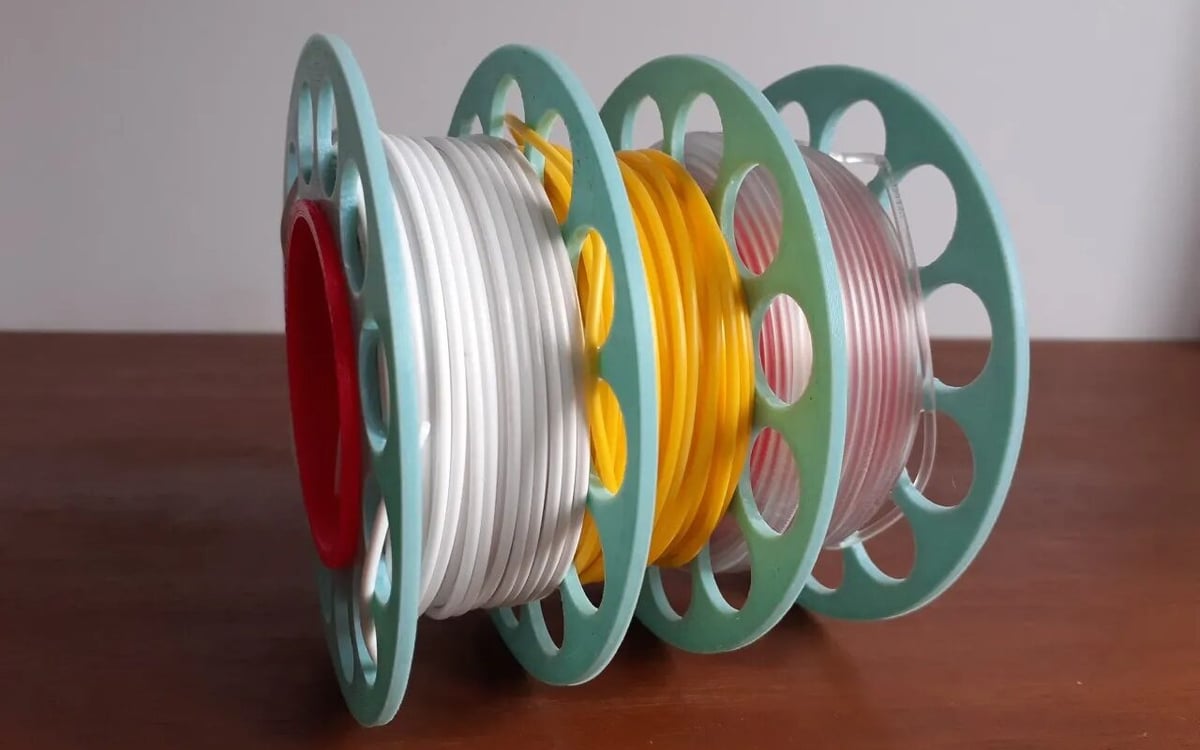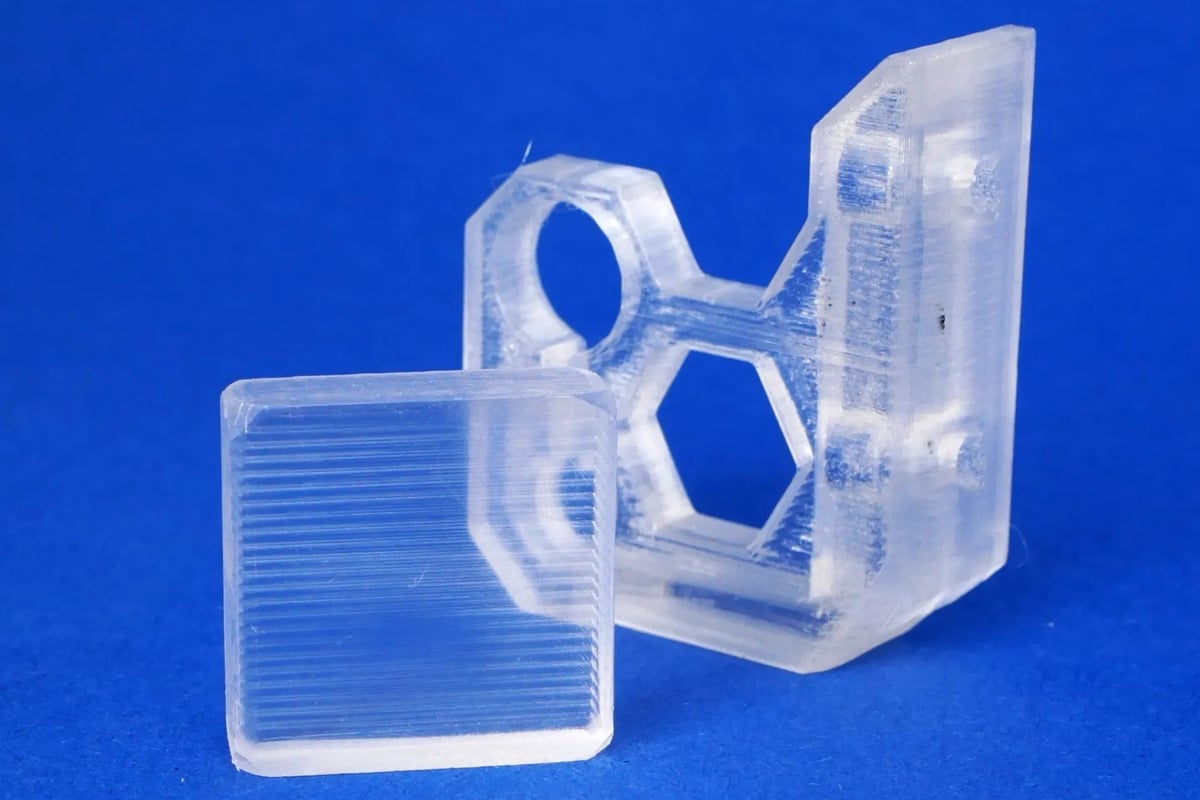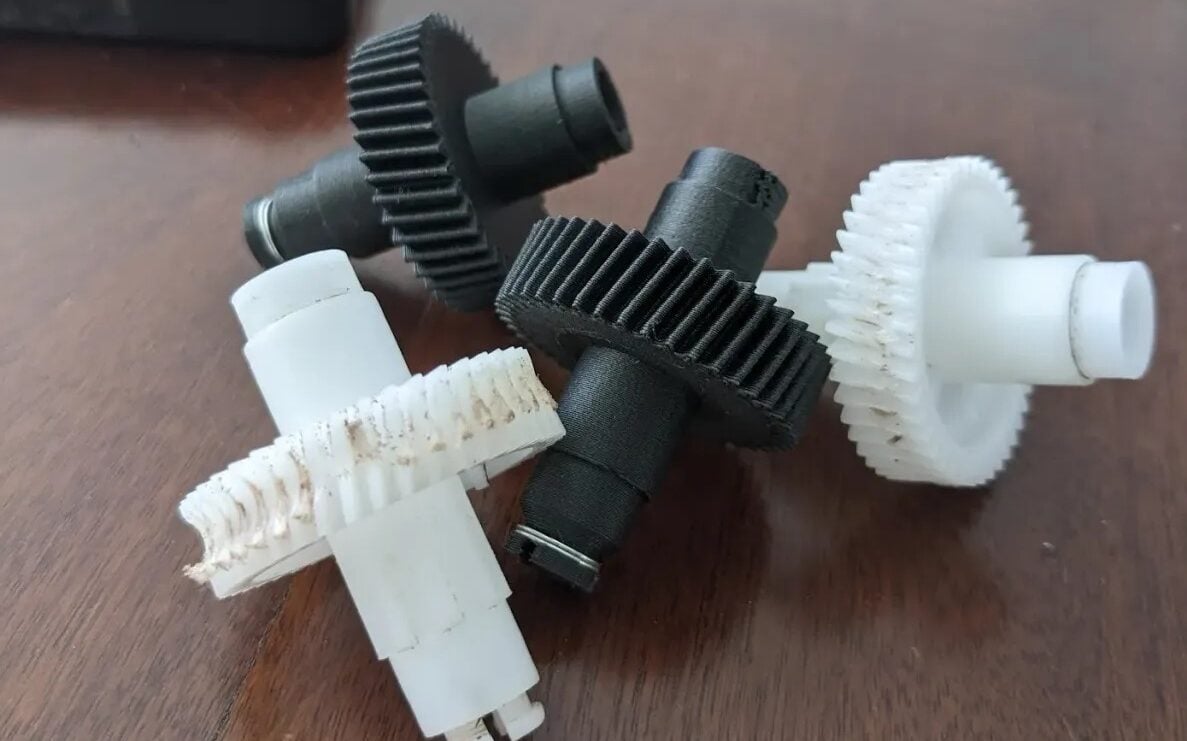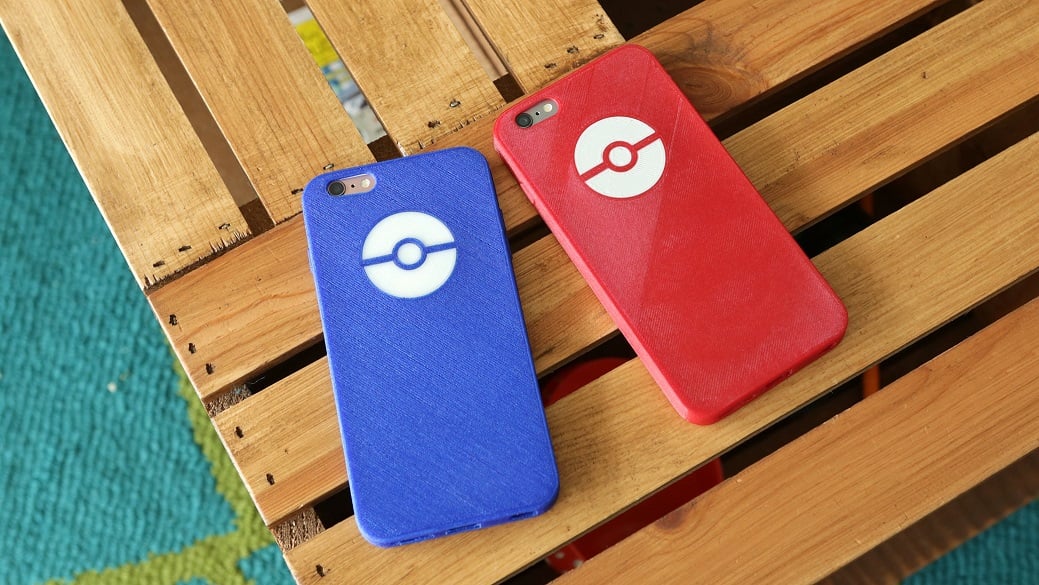Even though nearly every type of filament is a thermoplastic, each has its own temperature requirements. That’s because filaments are chemically very different from one another. The chemical makeup of a thermoplastic directly influences its glass transition temperature, the temperature at which the filament turns from brittle filament into a rubbery substance, and its melting temperature, at which the rubbery substance transitions into a fluid-like form.
Generally, the printing temperature of a material is well above its glass transition temperature but just below its melting temperature. Heating a filament above its melting temperature can make it difficult to control in extrusion as it flows too readily. Getting close to the melting temperature without going above it gives us a material just soft enough to flow.
In addition to the extrusion temperature, some filaments require a specific heated bed temperature. When certain filaments cool, they shrink and warp. A heated bed allows these plastics to cool slower when extruded so that warping is minimized. A heated bed also provides added adhesion, ensuring that the first layer sticks well and that the part isn’t released from the bed during printing.
It’s important to get these temperatures right, as it can be the difference between a failed print and a perfect one. In this article, we’ll take a look at the best temperatures for a variety of filaments, namely PLA, ABS, PETG, nylon, and TPU!
PLA

PLA is the most popular filament today, and one of the reasons for its popularity is its flexibility with printing conditions.
PLA prints typically in the range between 180 to 220 °C. Some recommend starting around 200 °C and adjusting up or down as needed. It doesn’t require a heated bed, but if your printer does have one, set it somewhere between 20 and 60 °C. You may be able to go up to 70 °C, but avoid higher temperatures.
When printing with PLA, be sure to keep cooling fans on. PLA produces the best results with proper cooling. Overall, PLA is easy to print and doesn’t require much to be successful.
- Nozzle temperature: 180-220 °C
- Bed temperature: 20-60 °C
ABS

Until recently, ABS was the most widely used filament. PLA now holds the top spot, primarily because ABS is much more challenging to print.
ABS requires slightly higher temperatures to print successfully. Set the nozzle temperature between 210 and 250 °C. A heated bed will also be necessary. If you can, aim for a temperature around 110 °C. If your printer is having trouble reaching this, 90 °C should suffice.
In addition, ABS needs to be printed in an enclosed 3D printer so that it cools very slowly. When ABS cools, it shrinks, and if a print cools too fast, it will warp. For the same reason, cooling fans should be turned off while printing ABS.
- Nozzle temperature: 210-250 °C
- Bed temperature: 90-110 °C
PETG

PETG is a relative newcomer, combining many aspects of PLA and ABS.
It requires very high temperatures, with the nozzle temperature somewhere between 220 and 250 °C. However, unlike ABS, PETG doesn’t require a heated bed.
PETG prints best with an adhesive layer like glue or blue painter’s tape on the bed. Without it, the bed should be heated to 50 to 80 °C to ensure the extruded filament sticks.
While PETG isn’t quite as easy to use as PLA, it’s far less demanding than ABS, and it’s one of the most popular filaments around today.
- Nozzle temperature: 220-250 °C
- Bed temperature: 50-80 °C
Nylon

Nylon is another incredibly powerful filament, although it’s fairly challenging to work with. It prints at temperatures hotter than any other filament on this list, with a recommended range of 240 to 290 °C. This makes it important to have an all-metal hot end that can handle high temperatures. A bed temperature between 55 and 65 °C is sufficient, and it’s worth keeping in mind that a layer of glue is also a must, as nylon can have significant issues with bed adhesion.
Nylon shouldn’t be printed with cooling fans because it needs to retain the heat for proper layer adhesion. This material is also very hygroscopic, meaning that it will absorb any moisture in the air. This greatly reduces the print quality, so the filament needs to be dried before being printed.
Nylon can be a challenge to use at first, but after learning how to properly print with this material, it becomes a very powerful tool.
- Nozzle temperature: 240-290 °C
- Bed temperature: 55-65 °C
TPU

Flexible filaments, one of which is TPU, are fun and useful materials to work with. However, they can be very difficult to use.
TPU prints at similar temperatures to PLA, working best at around 210 to 230 °C with a bed between 30 and 60 °C.
Since this material is so flexible, it can bend and stretch on its way from the extruder gear to the actual nozzle. Therefore, it’s important that the filament follows a confined path and is extruded slowly without retraction.
If these problems make themselves prominent, slightly increasing the extruder temperature can help decrease any strain on the filament that may be causing it to flex.
- Nozzle temperature: 210-230 °C
- Bed temperature: 30-60 °C
Recap
License: The text of "The Best 3D Printing Temperatures for PLA, Nylon & More" by All3DP is licensed under a Creative Commons Attribution 4.0 International License.






